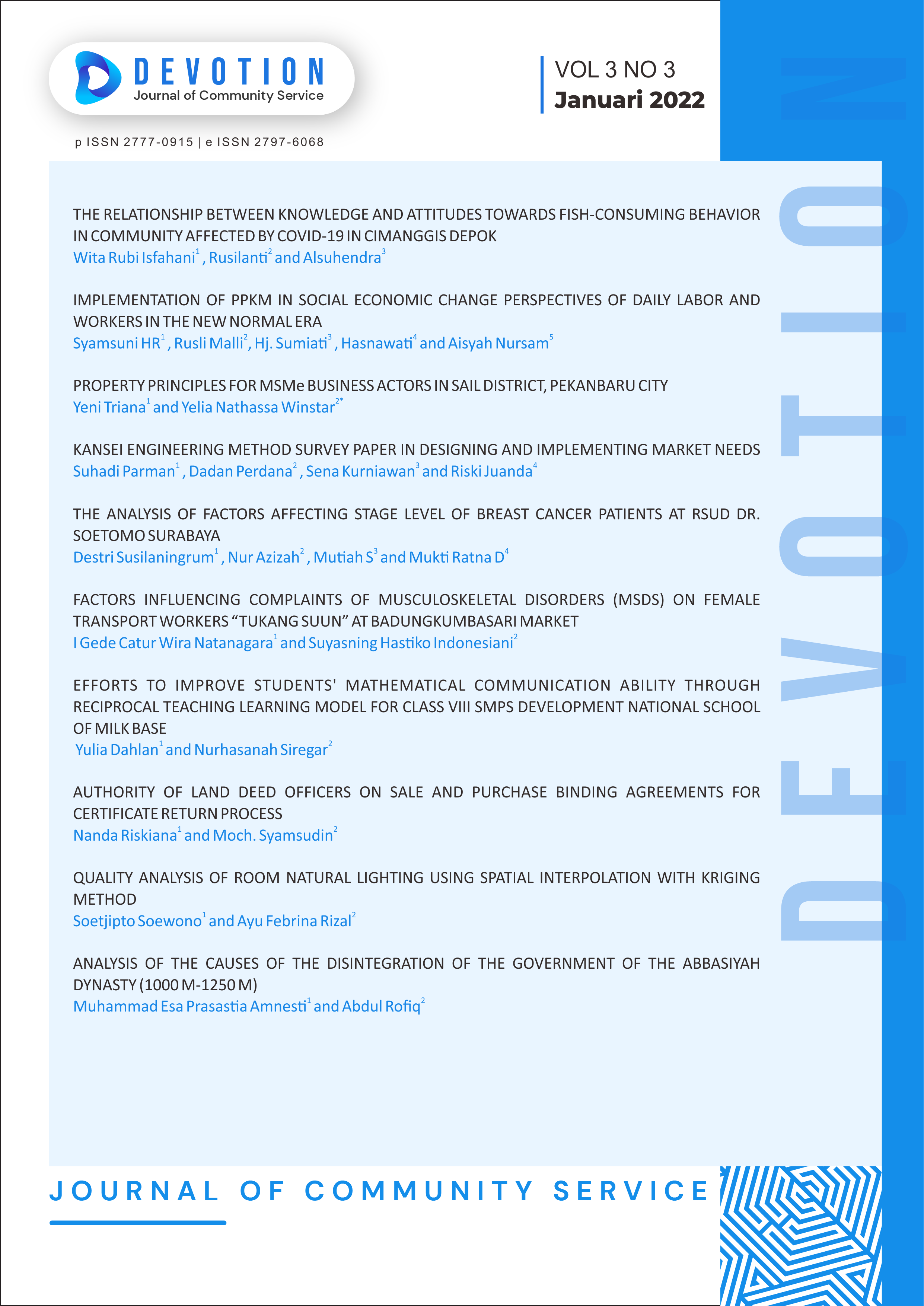Quality Analysis Of Room Natural Lighting Using Spatial Interpolation With Kriging Method
DOI:
https://doi.org/10.36418/dev.v3i3.106Keywords:
Spatial, Interpolation of outer, Inner Light Kriging MethodAbstract
The results of this study, where natural lighting can affect the lighting in the room, with the entry of natural lighting into the room through 4 open windows. The data retrieval process is for 1 day through special interpolation measurements using the Kirging method. The stages of data collection are in the morning, afternoon and evening with 3 windows open and 4 windows open. The intensity of light when 3 windows are open is a minimum average of -50 lux – 1350 lux in the morning and a maximum of -50 lux -1450 lux during the day, while the condition of 4 open windows is that the minimum average lighting is 0 – 1700 lux in the morning and maximum 50 lux -1750 lux during the day d. natural lighting can make reference to the lighting schedule in the room where the condition of 4 open windows is a mix of 5 points in the afternoon and a minimum of 3 points during the day. The electric power obtained is a maximum of 36 kWh, a minimum of 21.5 kWh and the resulting cost is a maximum of RP. 51,597, a minimum of RP. 30,814.87 so that the average energy efficiency of electric power reaches 11. 75%, the highest and the lowest reaches 11. 58% and efficiency towards costs reaches 58%.
Published
Issue
Section
License
Copyright (c) 2022 Soetjipto Soewono, Ayu Febrina Rizal

This work is licensed under a Creative Commons Attribution-ShareAlike 4.0 International License.
Authors who publish with this journal agree to the following terms:
- Authors retain copyright and grant the journal right of first publication with the work simultaneously licensed under a Creative Commons Attribution-ShareAlike 4.0 International. that allows others to share the work with an acknowledgement of the work's authorship and initial publication in this journal.
- Authors are able to enter into separate, additional contractual arrangements for the non-exclusive distribution of the journal's published version of the work (e.g., post it to an institutional repository or publish it in a book), with an acknowledgement of its initial publication in this journal.
- Authors are permitted and encouraged to post their work online (e.g., in institutional repositories or on their website) prior to and during the submission process, as it can lead to productive exchanges, as well as earlier and greater citation of published work.













